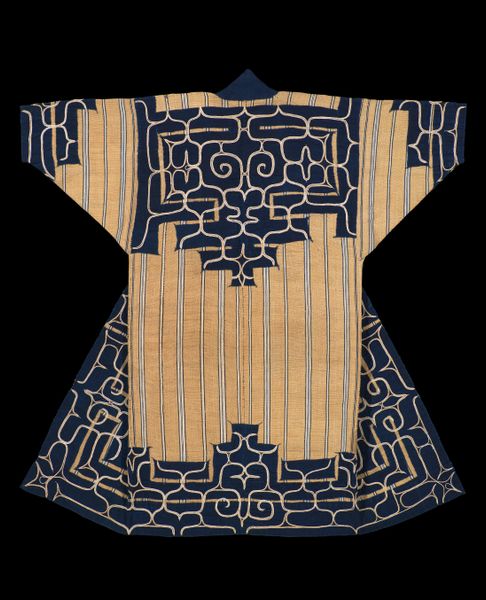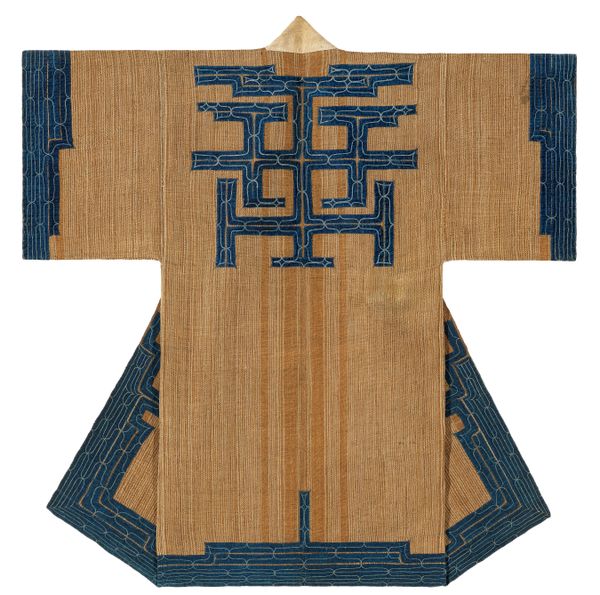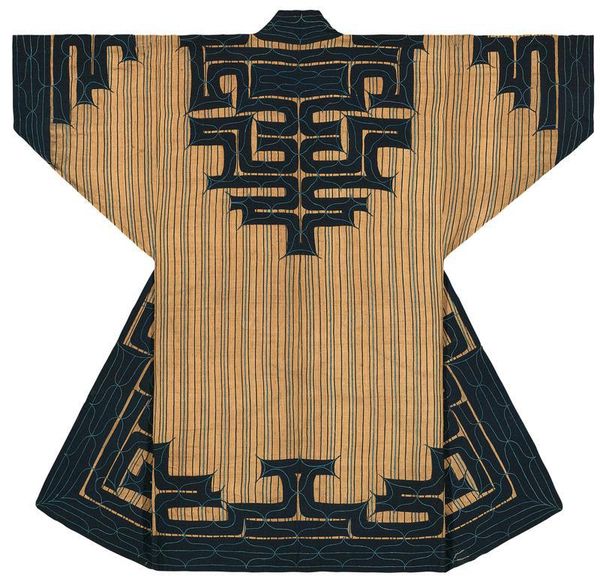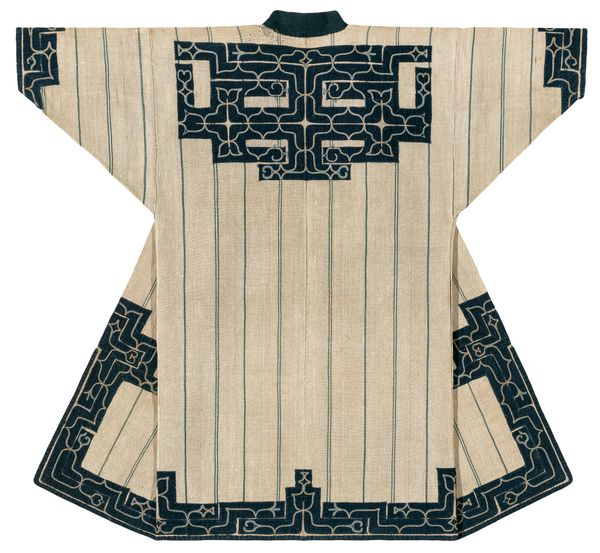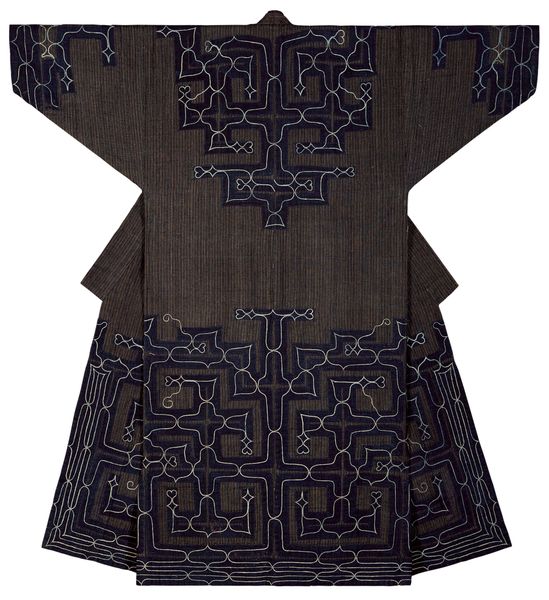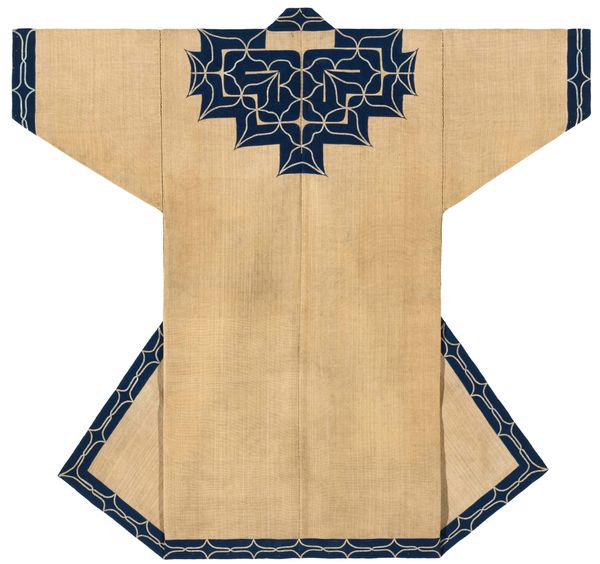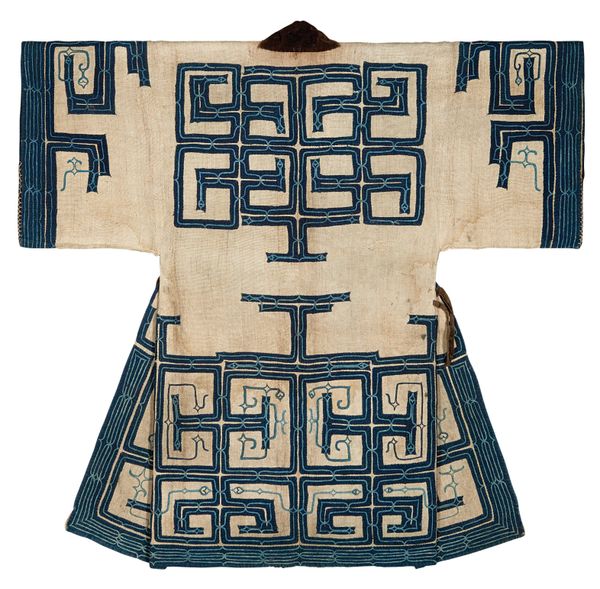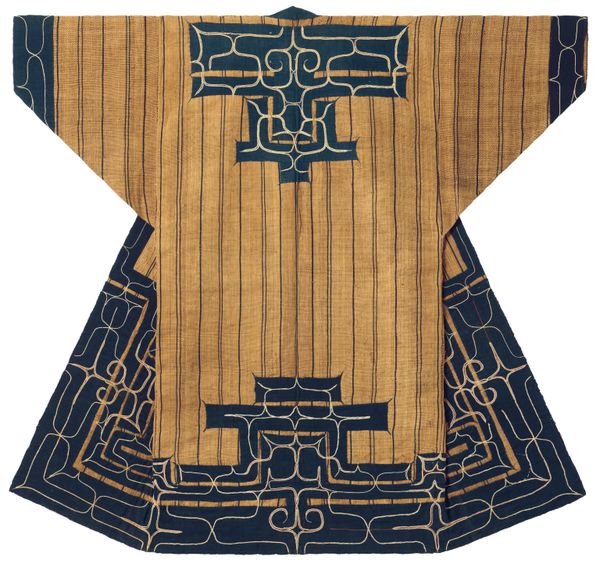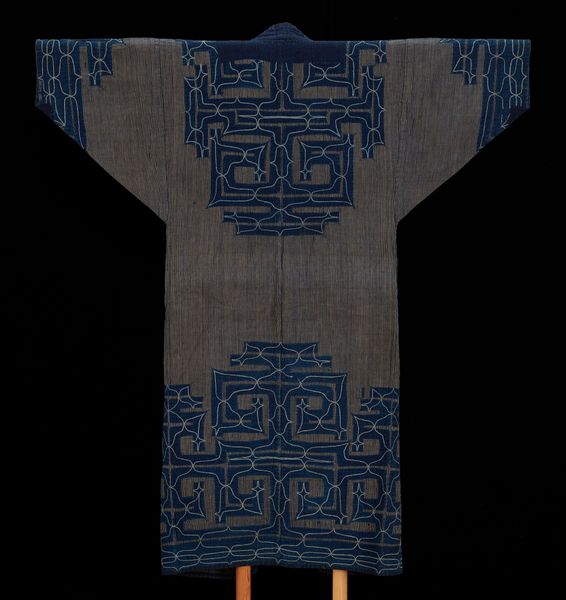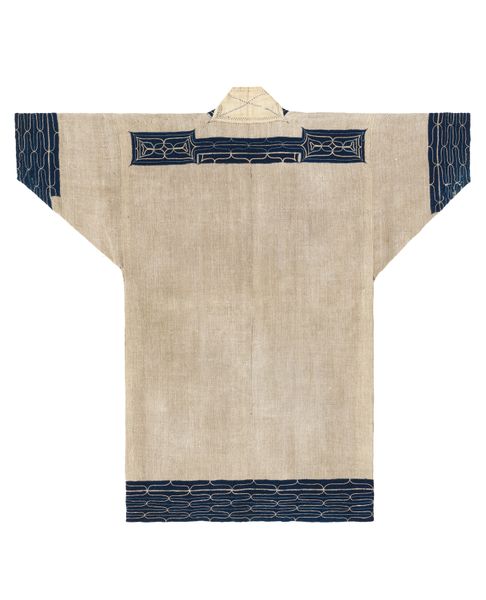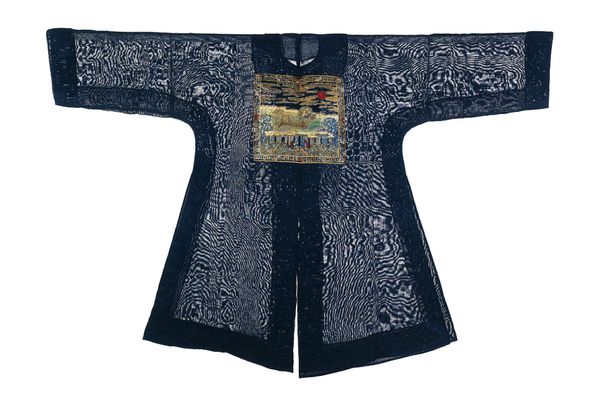
weaving, textile
#
fashion mockup
#
asian-art
#
weaving
#
textile
#
collage layering style
#
fashion and textile design
#
japan
#
hand-embroidered
#
geometric
#
fabric design
#
clothing theme
#
textile design
#
imprinted textile
#
layered pattern
#
clothing design
Dimensions: 48 3/4 × 52 1/2 in. (123.83 × 133.35 cm) (overall)
Copyright: Public Domain
Curator: Here we have a "Chikarkarpe Robe" originating from Japan, estimated to be from the late 19th century. It’s a fascinating textile piece housed here at the Minneapolis Institute of Art. Editor: The indigo and earth tones together feel almost architectural, but in a beautifully understated way. It reminds me of minimalist urban planning with an intriguing hint of tradition. Curator: Absolutely. Chikarkarpe, which translates to "that which is embroidered," gives us insight into its hand-worked nature and the techniques used to create such designs. It is, if you will, "slow fashion" avant la lettre! Editor: Embroidered and then woven, it's not just surface decoration, is it? So, where did it come from? Is this ceremonial garb? Or for daily use? Curator: That's a wonderful question. Chikarkarpe robes were traditionally worn by the Ainu people of Hokkaido. These weren’t merely garments; they served social and spiritual functions, often worn during ceremonies and carrying clan symbols and protective motifs. Editor: Oh, I see it now. The layering creates a depth that’s not just aesthetic. It's a form of visual storytelling, right? Protection or some form of coded clan history worn right there. And considering its cultural context, you almost feel the weight of heritage stitched into the fabric itself. Curator: Precisely. The robe also highlights the Japonisme movement that influenced Western art—but here we see an instance where Westerners and collectors misunderstood what these garments represent culturally, not just visually. These were far more significant in their original communities. Editor: It really shifts your perspective. It isn't merely admiring a beautiful piece of textile, but pondering how museums like this very one are tasked to re-center such items—restore them to their proper contexts, while also taking proper care of objects of great value to multiple cultures. Curator: That's a very elegant point. In essence, looking at the "Chikarkarpe Robe" invites us to appreciate the material artistry and cultural stories embedded within—a history made visible and, crucially, a perspective reframed. Editor: Well put! I leave here with a much richer appreciation of an artistic vision interlaced with layers of social meanings.
Comments
minneapolisinstituteofart almost 2 years ago
⋮
Chikarkarpe robes are made of embellished trade cotton. First they are decorated with appliquéd dyed cotton, and then they are embroidered with intricate, yet open, linear designs. Approaches differed from one region to another based on individual and popular tastes and the availability of materials.
Join the conversation
Join millions of artists and users on Artera today and experience the ultimate creative platform.



